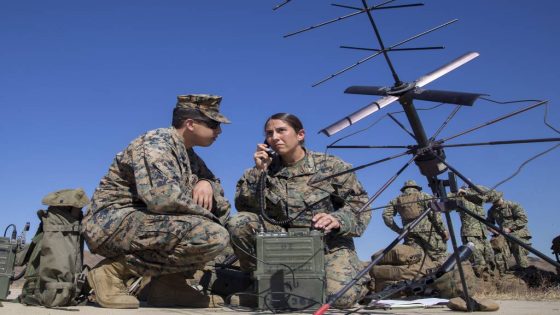U.S. adversaries around the world are deploying âformidableâ electronic warfare tools, and the Pentagon must either find ways to dominate the electromagnetic spectrum or prepare its forces to operate in contested or even denied environments, officials said at the C4ISRNET Conference.
âI think the biggest takeaway is that our near-peer adversaries, and then elements like Hamas, have formidable EW capabilities,â Brig. Gen. Ed Barker, the Armyâs program executive officer for intelligence, electronic warfare and sensors, said during Wednesdayâs virtual event. âItâs really about making sure that our systems, our soldiers and our commanders have that kind of freedom of maneuver within the EMS.â
The electromagnetic spectrum, or EMS, consists of the energy waves produced from radios, cellphones, radars and the like. The EMS environment has become highly contested, presenting a difficult battle space in which actors are vying for dominance.
Maintaining situational awareness is necessary for military commanders to communicate and guide weapons to their targets. EMS is becoming increasingly used by U.S. adversaries such as Russia in its war against Ukraine, the militant group Hamas in Gaza and the Yemen-based Houthi rebel group in its attack on ships in the Red Sea.
It comes down to a select few advanced capabilities facing off against ânon-exquisite capabilities in mass,â Barker said. âAnd sometimes, you know, that mass can be quite overwhelming.â
âWeâre realizing we have to build essentially an EW arsenal across the landscape to be able to go at these different types of threats,â he added.
At the same conference, Col. Josh Koslov, the head of the Air Forceâs 350th Spectrum Warfare Wing, said interoperability among low-cost weapon systems will help hold the line in electronic warfare.
âThey have to be able to talk to each other,â he said. âAnd so if we fight a near-peer tonight, weâre going to fight with the capabilities we have today. And so how do we make the systems that we have today more interoperable and able to share information, and then the systems that weâre bringing online?â
Koslov added that âsuper closeâ alignment between the warfighter and acquisition âis incredibly important as we move forward, and then making sure that weâre developing the requirements that drive interoperability from the beginning.â This means a reduced focus on major weapon systems, and more of a focus on the data that those weapon systems use, he noted.
He pointed to the use of low-cost tools that âcreate strategic and operational impactsâ in Ukraine and the Gaza Strip, adding that the U.S. needs to develop a system capable of countering that approach.
Source Agencies



